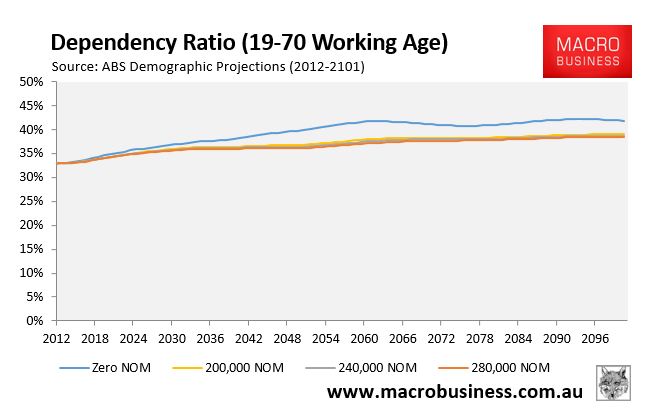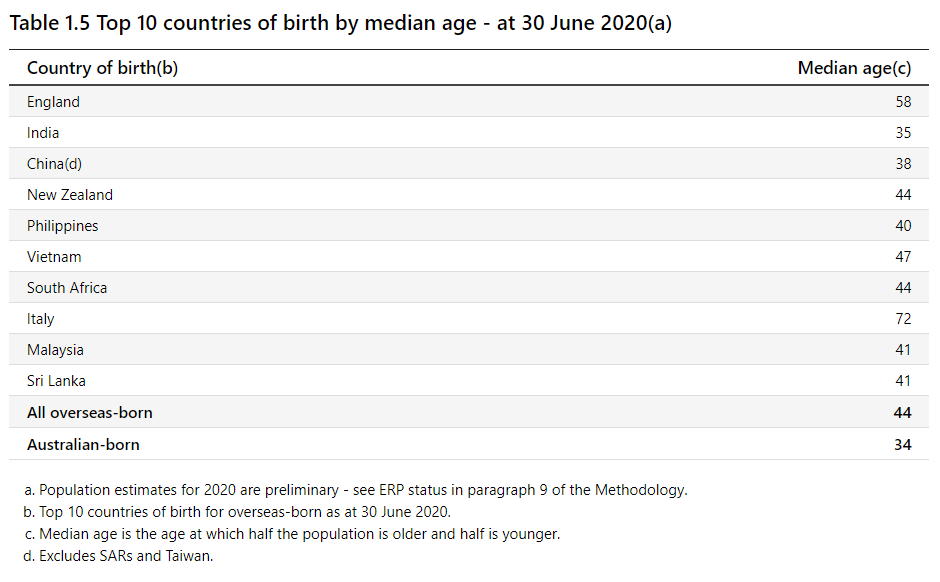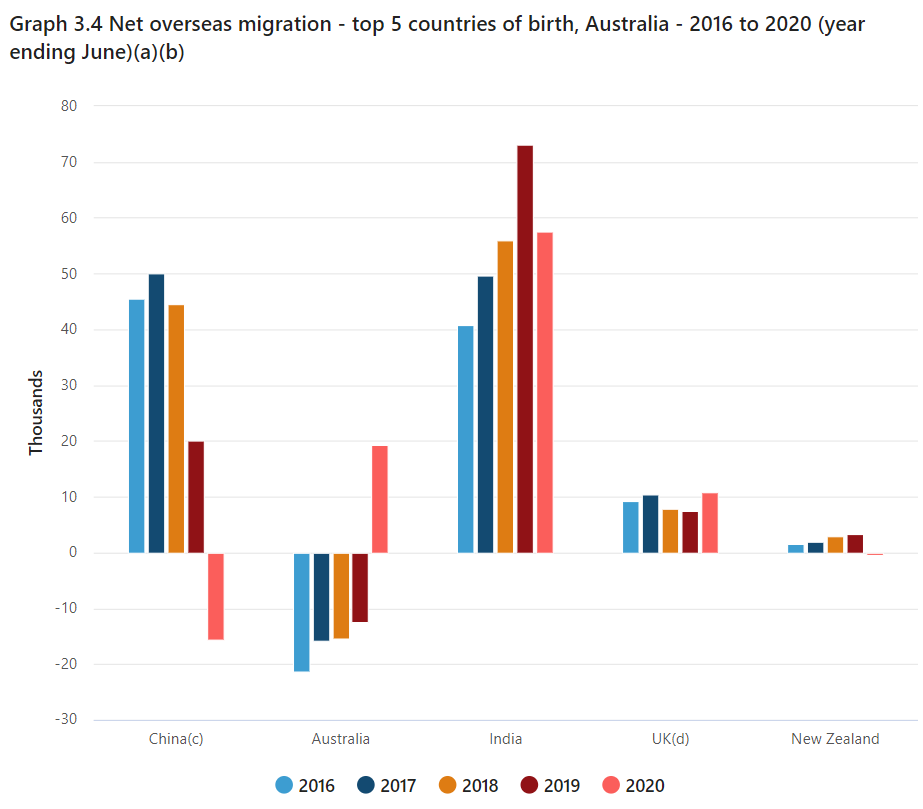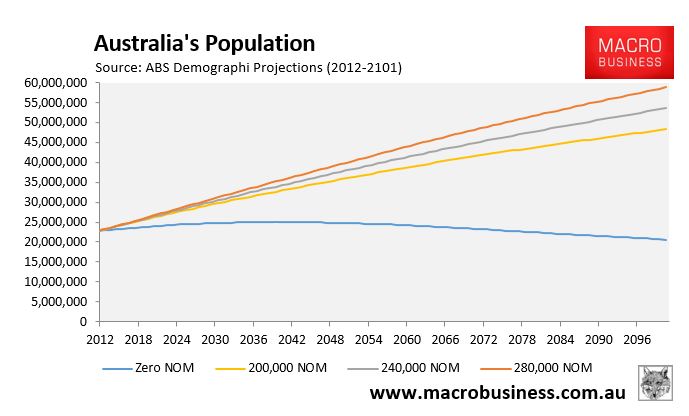For years population boosters have told us that Australia needs to run a ‘strong’ migration program to mitigate an ageing population.
The argument always goes something like this: migrants tend to be younger than the existing population. Therefore, importing people via immigration necessarily lowers the average age of the population, alleviating the ‘problem’ of population ageing.
Anybody with a shred of common sense can work out that this argument is spurious given migrants also age. Therefore, immigration can at best only delay population ageing, while also adding a host of other economic and environmental costs from having a substantially larger population, including lower wages for workers, crush-loaded infrastructure, increased traffic congestion, forcing people to live in apartments rather than houses, and environmental degradation.
Indeed, a key driver of Australia’s current ‘baby boomer bulge’ and our ageing population is the mass immigration program ran in the post-war period (i.e. 1950s and 1960s):
These migrants (which include my parents) are now old and are adding to Australia’s current ageing ‘problem’.
Therefore, importing more migrants to solve the ageing issue is classic ‘can-kick economics’, since today’s migrants will also grow old, in turn creating ageing problems in 40 year’s time. Some of these migrants will also bring their elderly family members into Australia via family reunion visas, thus exacerbating population ageing today.
On Friday, the Australian Bureau of Statistics (ABS) released migration data for the 2019-20 financial year, which revealed that every migrant population from the top 10 source nations had an older median age than the Australian-born population:
Even migrants from India, which has been by far our largest source of migrants over the past five years (see next chart), have a higher median age than the Australian born population:
Sure, the average age of the Australian born population is dragged down by births, a share of which has been from migrant parents. But this only highlights that migration has little impact on population ageing over the longer term, since migrants also grow old.
Even the ABS’ own demographic projections show that immigration is useless in ‘younging’ Australia’s population.
If we apply a more realistic definition for the working aged population of 19 to 70 (given younger Australians are staying in school and older Australians are working longer), then running annual net overseas migration (NOM) of 200,000 to 280,000 delivers only 3% more working-aged Australians by 2101 than zero NOM:

Mass immigration barely improves Australia’s dependency ratio and the ‘benefits’ are only transitory.
This tiny ‘benefit’ will only be transitory and comes at the expense of adding 150% to 200% more people to Australia’s population versus zero NOM, according to the ABS’ projections:
Such a gigantic increase in Australia’s population will obviously take a huge toll on the natural environment and general livability.
Ultimately, the only way to mitigate the economic impacts of population ageing is to boost productivity and lift workforce participation. Mass immigration undermines both of these solutions and is self-defeating for the economy, environment and living standards.





